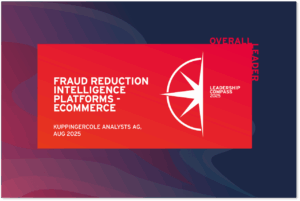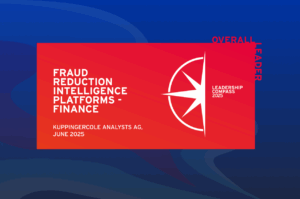AI agents, autonomous software tools capable of performing tasks for users, are quickly becoming mainstream. From ordering groceries to transferring funds, these agents promise convenience by navigating the same websites and apps humans do. But as with any disruptive technology, there’s a flip side.
The rise of AI agents is dismantling the very foundation of fraud detection.
The New Digital Reality
Consider this:
- Over 60% of visitors to online shops and retailers are now bots, not humans.
- More than 50% of consumers are comfortable letting AI agents shop and browse on their behalf, a number growing daily.
- Generative AI, sourced traffic to U.S. retail and banking sites has surged 2000% in just the last 12 months.
Why Fraud Detection is Going Blind
Most fraud prevention systems were built on the assumption that a human is behind each interaction. AI agents break that assumption at every layer:
- Device fingerprinting: Agents typically operate from cloud servers, decoupling user identity from device identity. This makes device-based signals unreliable.
- Behavioral biometrics: AI agents don’t hesitate, scroll, or mistype like humans. Legitimate agent activity can look identical to malicious automation.
- Bot detection: Agents are bots by design. If good Agents like ChatGPT Agent are allowed in, fraud teams now face the very hard task of deciding who’s behind it – a fraudster or a real customer”
The net effect?
Fraudsters are using legitimate AI agents to bypass detection entirely, hiding in plain sight.
The Stakes Couldn’t Be Higher
- Fraud losses are projected to increase up to 500% as attackers leverage agent-driven automation.
- U.S. financial-services industry fraud losses could hit $40B by 2027, up from $12.3B in 2023 (Deloitte).
- Fraud teams are facing 2–3x more workload just to maintain current levels of protection.
Legacy detection layers, device intelligence, behavioral analytics, bot detection are losing effectiveness. Without change, the fraud stack will be completely outmatched.
The Way Forward: Predictive, Agent-Aware AI
The solution isn’t more rules, CAPTCHAs, or friction. Those approaches will only frustrate customers and create more false positives.
Instead, fraud prevention must evolve with predictive AI models purpose-built for agent-driven environments.
- Understand and analyze intent, not just automation.
- Adapt in real time to legitimate and illegitimate agent traffic.
- Consolidate risk decisions across multiple sessions and transactions.
By adopting agent-aware models, banks and merchants can fight fire with fire, using AI to detect threats without degrading customer experience.
Download the Full Report
The adoption of AI agents is accelerating faster than anyone predicted. Fraud professionals must act now.
Download our new report, Blinded by the Agent, to learn how AI agents are reshaping fraud detection
Final Thought
We’re entering an era where machines, not humans, will drive the majority of digital interactions. Fraud prevention leaders can either adapt to this reality – or risk being left in the dark.
It’s time to build fraud defenses that see the unseen.



